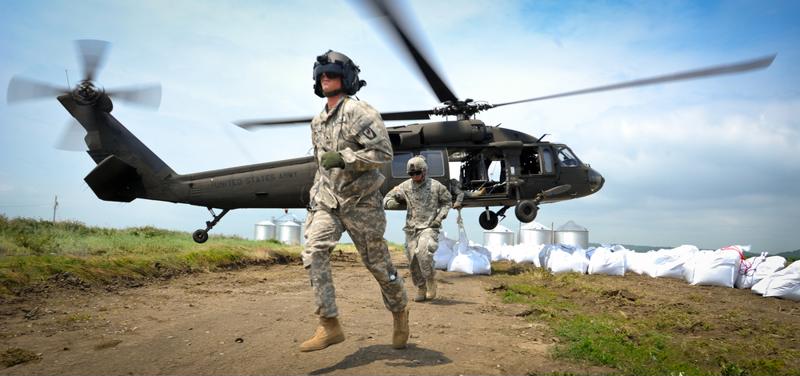Last year has aptly been called "the year of the guard" because of the United States' unparalleled need for the National Guard's resources. On June 9, the National Guard made its annual posture statement public. The document goes over the Guard's operational standings and its missions during the previous year. This is a statement that is released annually, but this year was unique in that 2020 was particularly busy for the National Guard.
As stated in the document, "On June 6, 120,000 National Guard Soldiers and Airmen were mobilized in support of overseas and domestic missions, one of the highest levels of National Guard support to our nation since World War II." Let's break down the posture statement and go over some of the most important points.
Warfight
According to the posture statement, warfight is a premier mission of the National Guard. As such, preparation is key. Winning wars is a driving force behind many of the Guard's goals, including training, equipment attainment, maintenance, and recruitment. National threat levels impact how the Guard conducts business, and the current state of affairs demands a high level of preparedness.
According to the statement, China, Russia, Iran, and North Korea have increased the global threat level. In turn, the Guard has had to expand its investment in training, which has paid off. Along this theme, the Guard offers vital support to the Space Force.
Addressing the changing warfight environment, the Guard says it is the main combat reserve for both the Army and the Air Force. However, it is prepared to deploy more guardsmen than ever before due to their dynamic employment and global operations strategies. This includes:
- Predictable mobilization requirements.
- Geographic agility.
- Maximize the Department of Defense's (DoD) flexibility.
- Modernization.
- Sustainability
- Interoperability.
Homeland
Because the National Guard is active on both a federal and state level, they are able to have a positive impact on the homeland during domestic emergencies. The National Guard's posture statement states that, while the ultimate goal is for threats to remain outside of America's borders, this might not be realistic due to cyberattacks and new-age weapons.
In 2020, teams have responded to the unprecedented COVID-19 global pandemic. The document reports that National Guard members logged about 10.9 million days in service of impacted communities in 2020. This was four times as many as were logged in 2019. Aside from this, the National Guard was called upon to assist in fighting the record number of wildfires in California.
The National Guard has also partnered with corporations and international organizations to provide maximum protection and to support beneficial alliances. One of its crown jewels is its State Partnership Program, which is "the DoD's premier security cooperation initiatives." Through this program, 84 countries have been able to form partnerships with the National Guard, helping promote and assist in providing communities with the COVID-19 vaccine.
The Guard's three priorities
According to the posture statement, the National Guard has three core priorities that it is currently striving to execute for the future of the organization.
- Fighting America's wars.
- Securing the homeland.
- Building enduring partnerships.
"Continued investment in the National Guard ensures we can meet today's demands while preserving the capability, capacity and deterrence our nation needs against a broad spectrum of potential future threats," said Army Gen. Daniel Hokanson, chief of the National Guard Bureau.
From natural disasters to pandemics and international security threats, the National Guard's preparedness and resource management has never been more valuable. While 2020 was the Year of the Guard, the posture statement emphasized a continued reliance on the Guard as it moves into the future of national security.

